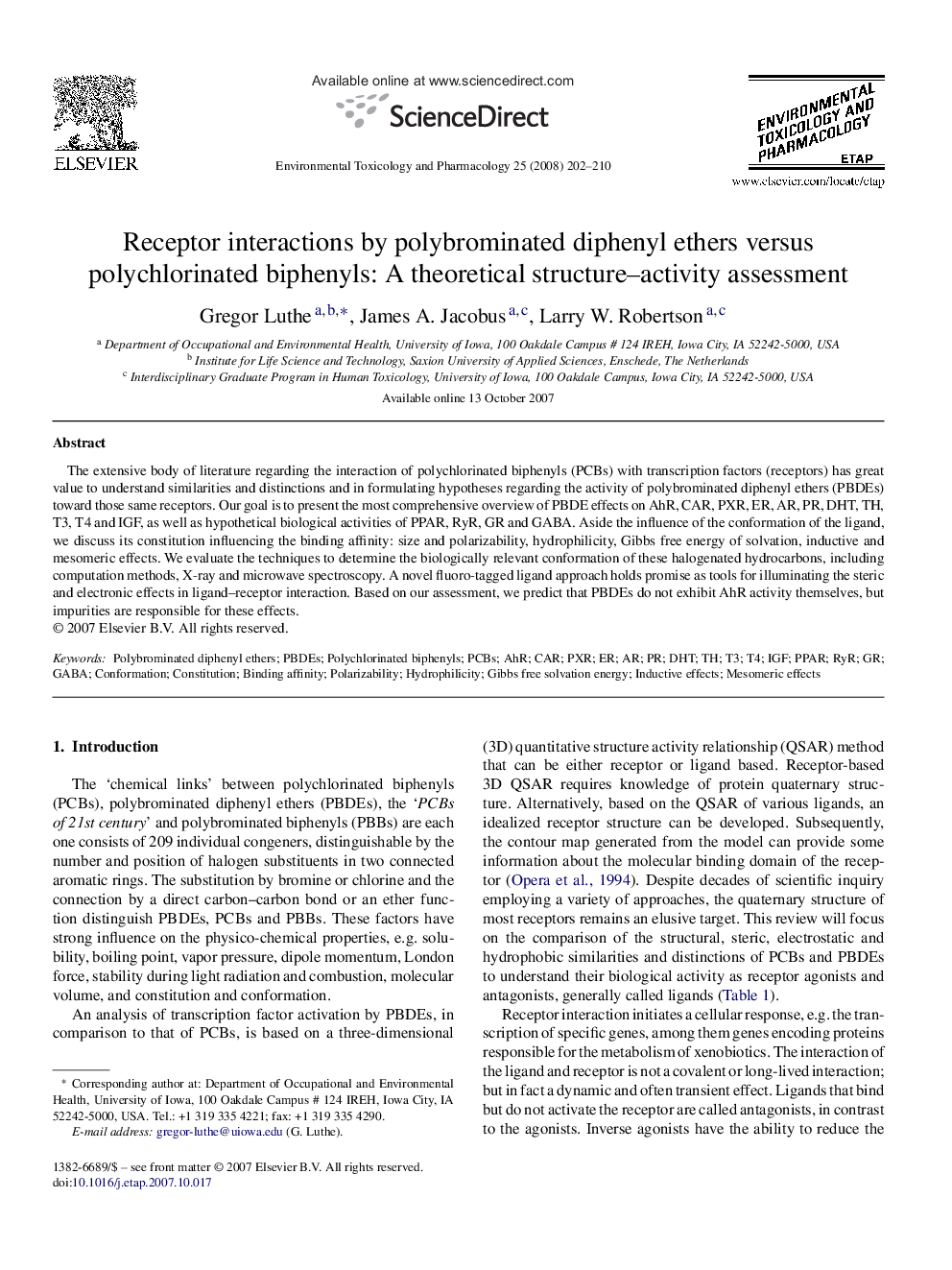| Article ID | Journal | Published Year | Pages | File Type |
|---|---|---|---|---|
| 2584394 | Environmental Toxicology and Pharmacology | 2008 | 9 Pages |
The extensive body of literature regarding the interaction of polychlorinated biphenyls (PCBs) with transcription factors (receptors) has great value to understand similarities and distinctions and in formulating hypotheses regarding the activity of polybrominated diphenyl ethers (PBDEs) toward those same receptors. Our goal is to present the most comprehensive overview of PBDE effects on AhR, CAR, PXR, ER, AR, PR, DHT, TH, T3, T4 and IGF, as well as hypothetical biological activities of PPAR, RyR, GR and GABA. Aside the influence of the conformation of the ligand, we discuss its constitution influencing the binding affinity: size and polarizability, hydrophilicity, Gibbs free energy of solvation, inductive and mesomeric effects. We evaluate the techniques to determine the biologically relevant conformation of these halogenated hydrocarbons, including computation methods, X-ray and microwave spectroscopy. A novel fluoro-tagged ligand approach holds promise as tools for illuminating the steric and electronic effects in ligand–receptor interaction. Based on our assessment, we predict that PBDEs do not exhibit AhR activity themselves, but impurities are responsible for these effects.
